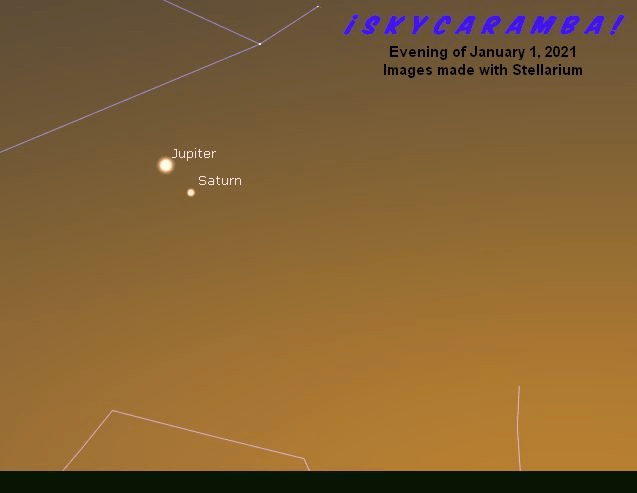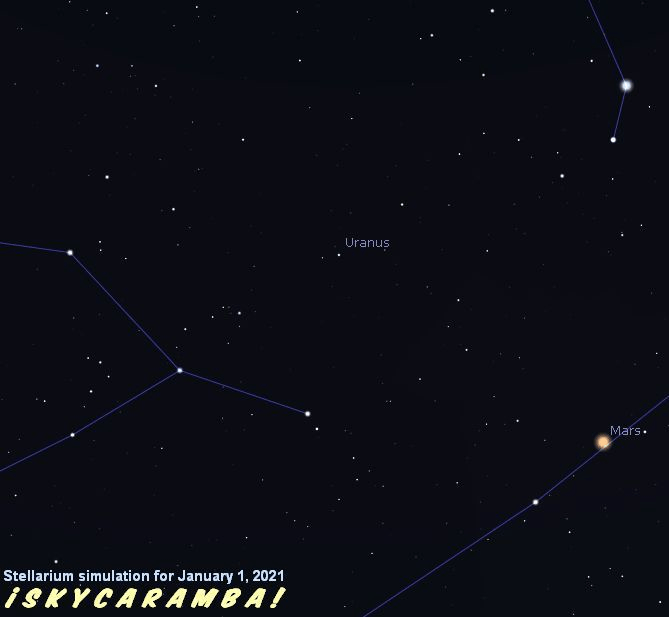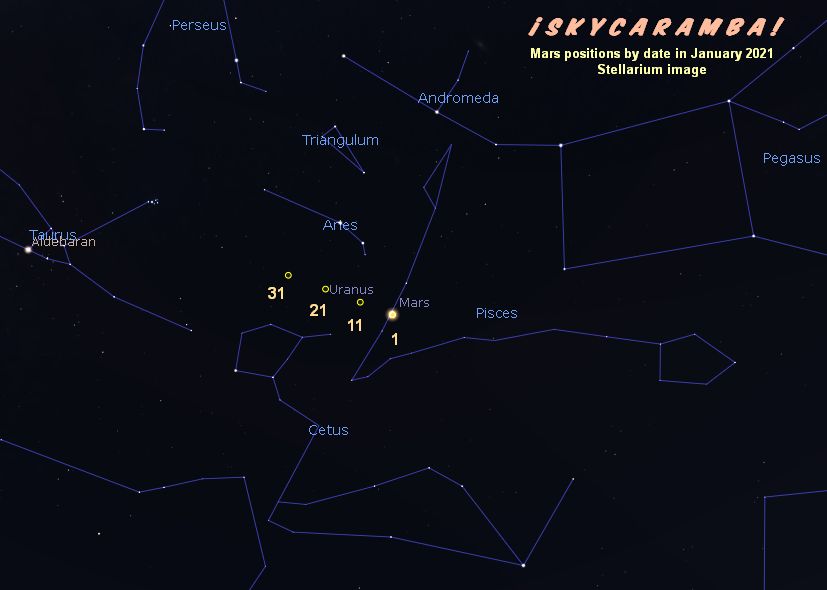Planet watching is likely to be frustrating this month. And last month’s super close conjunction of Jupiter and Saturn is hard to beat. But maybe we can come close. The two planets remain close together next to Capricornus at the beginning of January. As Jupiter leaves Saturn behind, both are heading into the sunset. Mercury is showing up to join them about a week into the new month and new year. The messenger planet passes Saturn first and then Jupiter from the 9th to the 11th. Then it keeps going. The trouble with seeing this close cluster is it the planets set so soon after the sun. The best view will be from close to the equator where the planets will set about 55 minutes after sunset. To see them so close to the horizon, it is absolutely necessary to have no obstructions on the horizon. Hills, buildings, trees, and distant clouds can all spoil the view.

On the 13th, a thin crescent moon joins the party. The next evening, it has passed all three planets already. The moon, Mercury, Jupiter, and Saturn line up nicely on the 14th. Seeing them will likely require binoculars to pick out the planets from the orange dusk.
As Jupiter and Saturn head toward conjunction with the sun, Mercury heads toward greatest elongation on the 24th. It is 18.6° east of the sun. Saturn’s conjunction with the sun happens on the same day and Jupiter’s on the 29th.

Mars has crossed to the easternmost fish of Pisces at the start of the month. On the 20th, between Aries and the head of Cetus, the red planet is closest to Uranus. They are 1.6° apart. Unfortunately, the first quarter moon is nearby casting a dreadful amount of light into the view. But you can see Uranus several nights before the moon interferes. Uranus is nearly stationary, so you’ll need to observe carefully with binoculars or a telescope.

January is the month when it’s obvious why Orion is known as a winter constellation in the northern hemisphere. It’s risen already when the sun sets and it’s up nearly all night. Look north of it and see Gemini.
In the dawn close to sunrise, see Venus close to the horizon. A thin waning crescent moon is right of it on the 11th. By the end of the month, it’s rising so close before sunrise, you may not find it.

Earth is at perihelion on the 2nd at 0.983 astronomical units from the sun. Mercury’s perihelion occurs on the 29th at 0.307 a.u.
The moon’s phases this month: last quarter on the 6th, new on the 13th, first quarter on the 20th, and full on the 28th.
The moon’s other circumstances: on the equator going south on the 6th, perigee at 367,400 km away on the 9th, southern lunistice on the 12th at 24.9°, on the equator going north on the 19th, apogee on the 21st at 404,400 km, and northern lunistice on the 26th at 24.9°.
The Quadrantid meteor shower’s possible peak time is on the 3rd at 14 hours UT. A waning gibbous moon causes some trouble viewing it. This is a northern hemisphere shower.

One thing you can do is get to know some of the constellations. Orion and Gemini are up all night.

Orion is the constellation known as the hunter. You won’t see Orion and Scorpius up at the same time. They’re on opposite sides of the sky. The old legends say that’s so the two can’t harm each other. Orion is the brightest of the constellations because it has so many bright stars in it. Get a star map of Orion and see them all for yourself. Most of the stars are hundreds of light years away. The middle star in Orion’s belt is almost 2,000 light years away. The star at the bottom of his dagger is more than 2,300 light years away!

Gemini are twins who had many adventures together. The ancient Greek story is that they had the same mother but different fathers. One was immortal because his father was a god. The other had a human father. And, that one died in a battle. The immortal one begged his father, Zeus, for help. Zeus’ solution: bring the mortal one back and let them both be together forever as a constellation.
